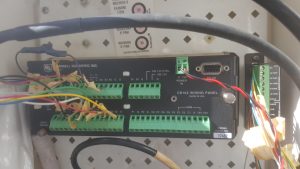Goals:
- Test the LoRa transmitter and receiver down by the river to see if it successfully transmits.(Austin/Matthew) – tested succesfully
- Get data out of the data logger into the PIC.(Matthew)
- Fix the issue with the extraneous characters when using RTCC alarm and sending from PIC to the LoRa transmitter.(Austin) – tested succesfully
- Solder up a board with the PIC and LoRa transmitter and anything else.(Austin/Matthew)
Worked on:
- Tested that the transmitter and receiver can transmit data from the data site to the public safety building. (Matt/Austin)
- Fixed the issue with UART from PIC to the radio module and eliminated the extra characters. (Austin)
- Figured out a way to read data from the receiver and get it put onto a folder onto the network. (Austin)
- Accessed the information from another computer on the network (Matt)
- Got both UART channels working alongside each other. (Matt/Austin)
Challenges:
- We have an issue with communicating with the data logger to get data out of it. We have seen the datalogger respond to a “ring” but we cannot establish a baud rate or get the data logger to send something to us.
- The logger sets an output pin high to respond to us setting the ring pin high, which we verififed
- Next step is to send carriage returns in UART spaced at least 50ms apart from each other at baud rate of 9600
- Logger should respond by sending a *, but its TXD line is constantly low
- We researched logic high in 5V UART and most systems count 2.6-2.7+ to be logic high. However could still be possible we need 5V logic to communicate

